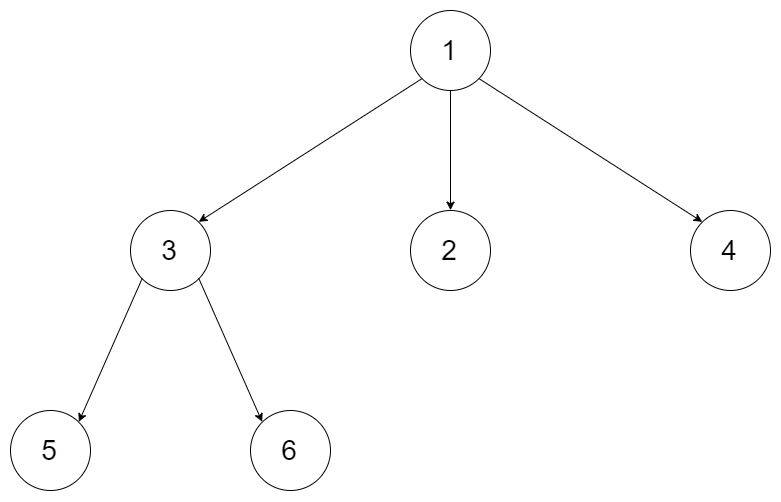树结构的深度遍历-前序遍历
树结构的深度遍历,本次介绍的是后序遍历方法。
介绍
后续遍历其实和前序遍历思路基本一致,唯一不同的是遍历路径是:子节点->父节点。
示例:

结果:[5,6,3,2,4,1]
代码
代码前提:
1
2
3
4
5
6
7
8
9
10
11
12
13
14
15
16
17
18
19
20
21
22
23
24
25
26
27
28
29
|
public class Node {
public int val;
public IList<Node> children;
public Node() {}
public Node(int _val) {
val = _val;
}
public Node(int _val,IList<Node> _children) {
val = _val;
children = _children;
}
}
public IList<int> Postorder(Node root) {
IList<int> list = new List<int>();
if(root == null){
return list;
}
InOrder(root,list);
return list;
}
|
递归方案
1
2
3
4
5
6
7
8
9
10
11
12
13
14
15
16
| private void InOrder(Node node,IList<int> list){
if(node == null){
return;
}
if(node.children != null && node.children.Count > 0){
for(int i = 0; i < node.children.Count; i++){
InOrder(node.children[i],list);
}
}
list.Add(node.val);
}
|
迭代方案(1)
此迭代方案是模拟递归方式实现。
不过由于需要先遍历子节点,子节点结束后会再一次访问父节点,结点存在遍历两次的情况,所以需要一个数组记录已经遍历过子节点的结点。
这样如果结点已经遍历过子节点,那么就可以直接放心输出了。
1
2
3
4
5
6
7
8
9
10
11
12
13
14
15
16
17
18
19
20
21
22
23
24
25
26
27
28
29
30
31
32
33
34
|
private void InOrder(Node node,IList<int> list){
if(node == null){
return;
}
IList<Node> overNodes = new List<Node>();
Stack<Node> stack = new Stack<Node>();
stack.Push(node);
while(stack.Count > 0){
Node pNode = stack.Peek();
if(pNode.children == null || pNode.children.Count <= 0 || overNodes.Contains(pNode)){
stack.Pop();
list.Add(pNode.val);
continue;
}
if(pNode.children != null && pNode.children.Count > 0){
for(int i = pNode.children.Count - 1; i >= 0; i--){
stack.Push(pNode.children[i]);
}
}
overNodes.Add(pNode);
}
|
迭代方案(2)
该方法比较简单,后续遍历的结果其实与前序遍历相反,所以先按照前序遍历进行一次遍历,然后结果反转即可。
需要注意本次的前序遍历中,子节点的出栈顺序就必须是反序的了。
1
2
3
4
5
6
7
8
9
10
11
12
13
14
15
16
17
18
19
20
21
22
23
24
25
26
27
28
29
30
31
32
|
private void InOrder(Node node,IList<int> list){
if(node == null){
return;
}
Stack<Node> stack = new Stack<Node>();
stack.Push(node);
while(stack.Count > 0){
Node pNode = stack.Pop();
list.Add(pNode.val);
if(pNode.children != null && pNode.children.Count > 0){
for(int i = 0; i < pNode.children.Count; i++){
stack.Push(pNode.children[i]);
}
}
}
((List<int>)list).Reverse();
}
|
该方案简单,而且性能也比较好,比较推荐这种写法。
